You say you want to be an audio reviewer? C’mon in, the water’s fine. I’ve been writing for SoundStage! since early 2001, and it’s been a swell gig. I’ve had well over 100 articles published in this fine family of magazines, and seen nearly that many pieces of juicy, fun gear cycle through my system. It’s been a wonderful ride, and I look forward to continuing my relationship with SoundStage! for many years to come.
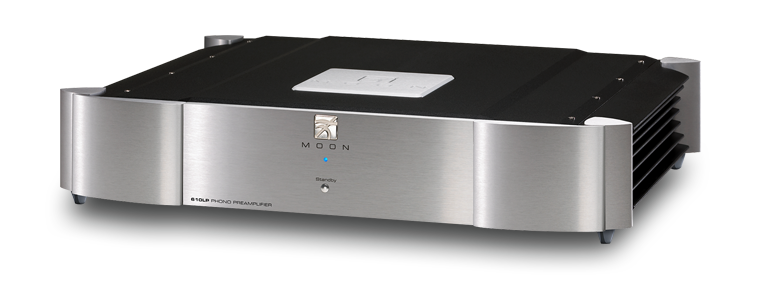
But hold on a sec: I hope you’re not considering a move into audio writing just for the gear, because, let me tell you, it’s a hard slog that you might come to regret. I’ve been writing since I was a teenager, and SoundStage! allows me to scratch an itch that would otherwise drive me crazy. Of course, getting to listen to a constant parade of high-end gear is a huge benefit, but the creative act of writing about it is what keeps me going. If I didn’t enjoy the actual writing, I could easily see myself falling out of love with audio, due to the frustrations that can sometimes come along with the responsibilities of reviewing.
Sometimes, the difficulties of writing a review can dampen the spirit -- but it’s the satisfaction of doing The Job that enables me to power through the challenges that certain pieces of equipment can present. Difficult reviews come in several flavors. Cables are a challenge because, well, the audible differences among them can be extremely subtle, and because cables are a royal pain in the ass to swap in and out. Reviewing cables is laborious, and I try to do it no more often than once every five years. Next up is equipment that doesn’t live up to my expectations: the archetypal rock and a hard place. As a professional, I need to live with and listen to a piece of equipment, and write as fairly as I can about it, despite the fact that I don’t like its sound. If you look back at my reviews, you’ll likely be unable to spot such products, because whether or not I like the sound is irrelevant. My job is to tell you what that component sounds like. But it’s work.
The third category of difficult review might surprise you. Imagine this: The UPS driver drops off a big, heavy box that contains a neutron-star-dense black slab with some inputs and outputs on back and a power switch up front. You insert this light-sucking monster in your equipment rack, hook it up just so, and let the music fly. You sit back, listen -- and are utterly confounded. Everything sounds right -- superb, as good as it’s ever been -- but you just can’t put your finger on why. These are the components feared and dreaded by reviewers everywhere because they’re [gasp] . . . neutral. So neutral that they’re almost impossible to write about. The horror . . .
Description
Simaudio Ltd.’s Moon Evolution 610LP ($7500 USD) is an ambitious component: a fully balanced, feature-rich design. Its enclosure is milled from aluminum and, with dimensions of 18.75”W x 4”H x 16.8”D and a shipping weight of 40 pounds, it’s a chunky beast. Inside, the 610LP is most notable for accepting a balanced signal (as my Aqvox Phono 2 Ci phono stage has been doing for years), which is the optimal way to transfer the signal from a cartridge (the 610LP will also take a single-ended input). The signal that comes out of a cartridge is naturally balanced -- i.e., positive and negative, not positive and ground, as in a single-ended signal -- so it makes sense to take advantage of that fact. With most turntables, all you’ll need to use the 610LP’s balanced circuitry is a re-terminated cable.

The Evolution 610LP is a slam-dunk for Simaudio, based in Montreal, Quebec -- essentially, it’s a scaled-down version of their top-of-the-line 810LP phono stage. The 810LP adds a few higher-rent design features, most notably a suspended circuit board and four more stages of DC voltage regulation. In my cost-constrained world, I’d have no concerns whatsoever choosing the 610LP over the 810LP. If my seven numbers should come up in the Canadian Lotto, that decision might change, but old habits would die hard: I’d probably still look at the 610LP as the sweet spot in Simaudio’s range.
Like any high-end phono stage, the 610LP is fully configurable, with dizzying arrays of settings for impedance, capacitance, gain, and RIAA curves. However, the DIP switches for making these settings are most inconveniently located on the 610LP’s underside. When I asked Simaudio’s marketing director, Lionel Goodfield, about this aggravating arrangement, he looked at me as if I were a touch dense. “They’re on the bottom because that puts them close to the circuit board. For best sound. Of course.” I should have known.
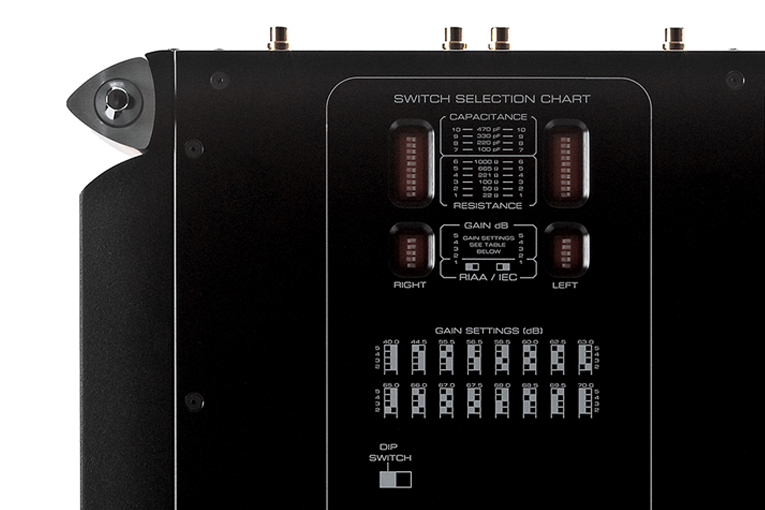
The DIP switches themselves are rather complex. Because the 610LP is truly dual mono, each set of switches is duplicated: one set for the left channel, and a mirror-imaged set for the right. I tried only a few different configurations (see below) -- the 610LP was too heavy, dense, and awkward a son-of-a-bitch to keep maneuvering onto and off its shelf. Its conical feet are spaced so as to just barely not fit on the 18”W x 14”D shelves of my Target rack, so on top of having to straight-arm its substantial bulk into place, I also had to jerry-rig three of Ayre Acoustics’ myrtle-wood blocks under the bottom plate. It’s not all fun and games here in ReviewerLand. In retrospect, I should have installed the 610LP upside-down, to ease adjustments of all those DIPs.
I chose an impedance of 100 ohms, which I know works well with my Roksan Shiraz cartridge. I had to try a few different gain settings, and settled on 66dB. I didn’t futz with the capacitance, instead setting it at 0 picofarads, as suggested in Simaudio’s comprehensive manual.
I did try both equalization curves. The first is the RIAA’s, which we’re all familiar with; the second is the IEC’s implementation, which rolls off the bass below 20Hz by 6dB/octave. My Focus Audio FP60 BEs, while ostensibly minimonitors, are quite chunky, with 6” woofers. Still, I noticed a fair bit of extraneous, amusical cone movement, and it was nice to be able to tame some of that rumble. That said, I didn’t notice a huge reduction of woofer pump with the IEC curve, so out came the 610LP from its shelf, and I swapped it back to the curve with which I’ve lived my whole life: RIAA. Never willing to let things be (“This sounds great! Let’s take it apart and find out why!”), I later switched back to IEC, to further investigate its sound. In the end, I came to appreciate the resulting tiny reduction of woofer pump, though I couldn’t say it was accompanied by any audible improvement.
Sound
While I knew, as soon as I began listening, that the 610LP was doing some really neat stuff, it wasn’t until I listened to recordings of solo acoustic piano that I figured out what it was. I recently began digging through the four linear feet of classical LPs I’ve accumulated over two decades’ worth of garage sales. Just today I slapped on the ’table Vladimir Ashkenazy playing Shubert’s Sonata in G, D.894 (LP, London CS 6820). It took two aggressive sessions in my Spin Clean record cleaner to get it to play well, but as I listened to this totally unfamiliar piece, I found I wasn’t exactly enthused. It seemed rather tinkly-tink, and was kind of short. When I got up to play another album, I noticed that I’d played the Schubert at 45rpm. Feeling somewhat sheepish, I gave side 2 a spin, but at 33.3rpm. From the first note, I realized I’d broken the back of this review.
Played at the correct speed, this is a wonderful album. In the Fantasie, at the beginning of side 1, Ashkenazy’s playing is tentative and sparse, as if each subsequent bar might not actually happen. But the music continues, always retaining its shy, almost sad nature. The 610LP dragged so much space and dynamics out of this recording that, after playing it, I hooked back up my Aqvox phono stage to see if this was some sort of magic recording, or if the 610LP was the culprit.
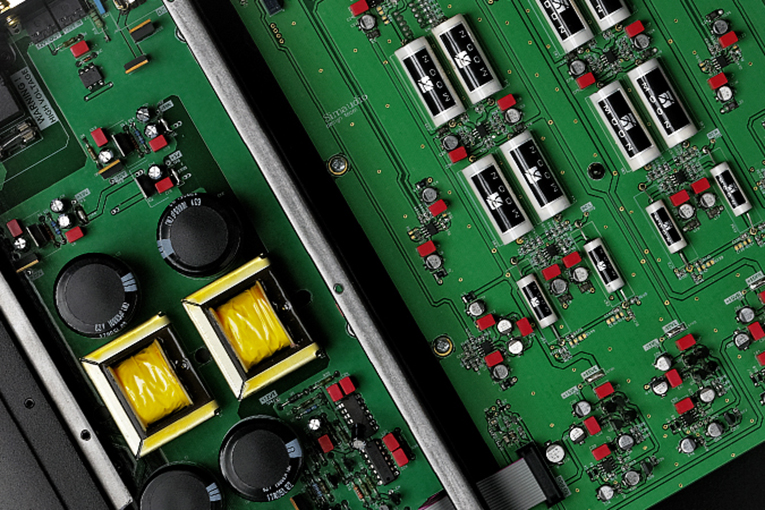
It turned out to be a bit of both. Really good hi-fi components -- the statement-level stuff, in which class I place the 610LP -- can seem to slow the music down. It’s almost as if the music is playing at a slower speed. I think this characteristic is a result of a counterintuitive accentuation of the leading edges of transients, which serves to almost syncopate the back beat. Eleni Mandell’s Country for True Lovers (LP, Heart of a Champion HoC-011) is a longtime favorite of mine, and the first track, “Another Lonely Heart,” was affected by the 610LP’s temporal hijinks. As I listened to Mandell’s rich, evocative voice, I was acutely aware of the waltz-like timing -- much more so than via my Aqvox. Perhaps it’s a power-supply thing, the 610LP’s focus on unrestrained juice allowing it to convey the transient attacks in a more dynamic manner. That’s just me speculating, but whatever the reason, the 610LP was a master of rhythm -- it relayed to me the guts, the juice, the meat of the music in a way that few components can.
Back to that Schubert sonata: The deep, sad, shy nature of the music was gloriously served by the 610LP, and I could hear the bottoming-out of each key as it was pressed. This was depth of a different level from that portrayed by my Aqvox -- depth of a physical nature, with the palpable sense of a physical chunk of ivory-clad wood actually moving in space alongside other such chunks.
My phone’s ring tone is Led Zeppelin’s “Sick Again.” (It used to be “Heartbreaker,” but I’m no longer a free agent.) So damn straight I trotted down to my local record shop (Tiny Records on Toronto’s Queen Street E.) and picked up the new vinyl reissue of Physical Graffiti the week it was released. As I write this, I’m listening to “The Rover” and I’m listening to it loud. It’s the 40th anniversary of the original release of this remarkable album, and playing it loud feels proper, as my English grandfather used to say. The 610LP’s depth, slam, and dynamic prowess allowed it to excavate all the newfound bass and lower-midrange richness in the new Zep reissues, and high volumes tell all: The 610LP was just right in the highs, with a silkiness that wasn’t overdone, but that balanced out its ability to tell me what’s on these records. Honest. Neutral. But maybe leaning just the tiniest bit toward the safety of sweetness. “The Rover” segues into “In My Time of Dying,” an absolute monster track that epitomizes everything I love about this band. It swells, recedes, builds, and thrashes, but never crosses the line to a lack of control. That music is a perfect analog of the 610LP’s sound -- the Simaudio phono stage was a master at locking it together, keeping a tight rein on the music, while still letting the intent flow through.
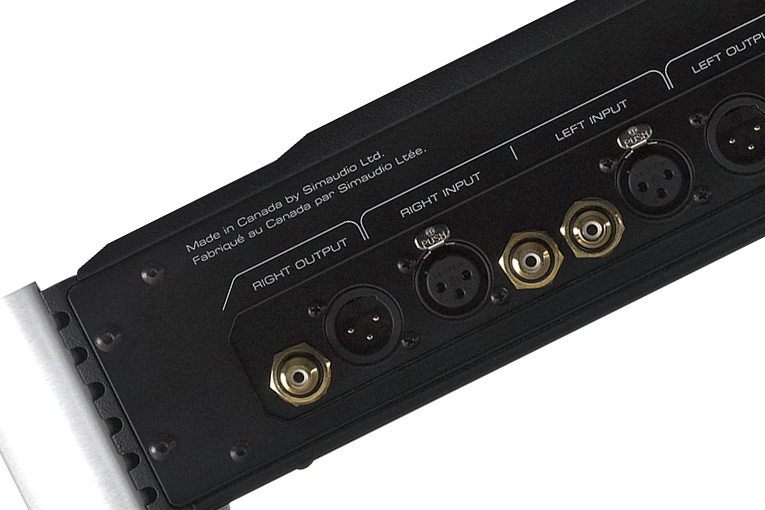
I knew from the first LP I played through the 610LP that I wasn’t going to be able to just say “it had great bass and treble.” Don’t misunderstand -- the 610LP did have a tight grip down low, and a nice, silky, extended top end. But so does my Aqvox. It was the ethereal way the 610LP dug down low, with snappy full stops and unbelievably crisp delineation of pitches, that set its bass performance apart from the one-fifth-the-price Aqvox.
I began listening to Stravinsky’s Le Sacre du Printemps in eighth grade, on my friend Rich’s father’s system -- big, boxy KEFs driven by an all-Carver amp chain. In the aforementioned garage-sale pile, I found a nice copy of a performance by Herbert von Karajan and the Berlin Philharmonic (LP, Deutsche Grammophon 2530 884). There’s tons of low-frequency information on this disc, with lots of diverse instruments contributing. A couple minutes into side 1 there’s some rhythmic double-bass work interspersed with plucked cellos. Through the 610LP, I could easily hear the physical space between these two string sections, in terms of both depth and width. The double basses had a juicy, rosiny sound -- even when honkin’ great timpani whacks added to the overall basement-level confusion, I never lost track of who was doing what.
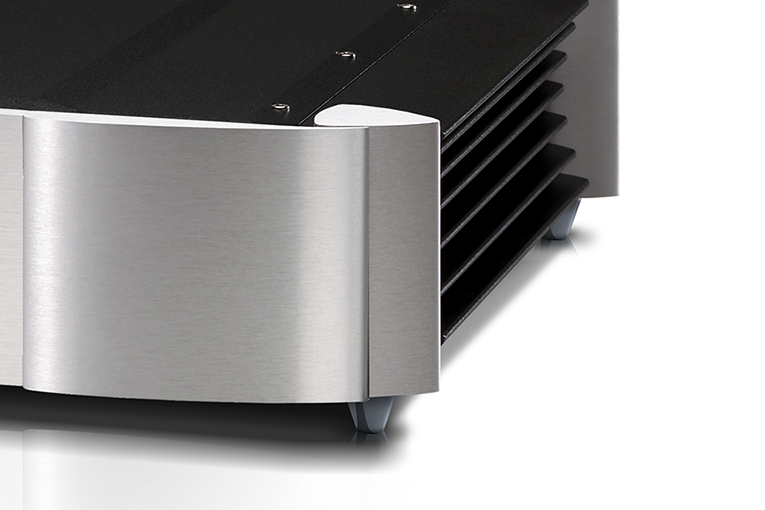
And, yes, the 610LP did the treble thing with elegance when required, and sizzle when that was warranted. I was close to graduating from high school when Rush released Permanent Waves. I loved that album then, and love it now. I kissed my first real girlfriend (Lori, are you reading this?) the first time as “The Spirit of Radio” played in the background, so listening to Mobile Fidelity Sound Lab’s reissue (LP, Mercury/MFSL 1-302) is a real time-travel experience. MoFi did a bang-up job with this album; listening to “Freewill” through the 610LP, I was able to bathe in Geddy Lee’s bass solo and Alex Lifeson’s follow-up guitar rampage. At extreme neighbor-offending levels (my neighbor to the north sent a passive-aggressive e-mail), I could feel and almost see the overtones in that electric guitar. It was all there -- all those highs, not even remotely rolled off but also controlled, and so very, very far from harsh. It was . . . proper.
Conclusion
So. Bass? Check. Treble? Yep. Imaging? You bet. The 610LP did it all right. But it’s how the Simaudio put it all together that makes this phono stage truly valuable. To me, analog is still total sorcery. It seems almost impossible that you could get this kind of sound quality from rubbing a stone on plastic, and the disconnect that results from a better analog component downstream still makes me shake my head in astonishment. But adding the 610LP to my system has markedly increased my enjoyment of the music stored on my LPs -- far more than I expected. And that makes me smile.
Writing about audio helps me get my head screwed back on straight after a week of work, the commute to and from same, and the stresses of 21st-century life. When I listen to music with the intent of writing about an audio component and how it affects the sound and my reaction to it, I can better order my thoughts, centering my being on something that’s almost platonic but that verges on the hyperreal. As I near the end of the review process, I inevitably feel that the process of writing the review has stretched me thin. It’s hard work, but I feel better for it -- calmer. Sometimes I just feel happy that it’s over with; other times I feel whimsical and dwell on the component I’ve just reviewed, contrasting my written thoughts with how it felt to live with the thing’s sound and work through my experience of it. The Simaudio Moon Evolution 610LP left me whimsical, satisfied, and peaceful. I enjoyed my time with it -- it was a pleasure to discover its personality by peeling the onion of its sound.
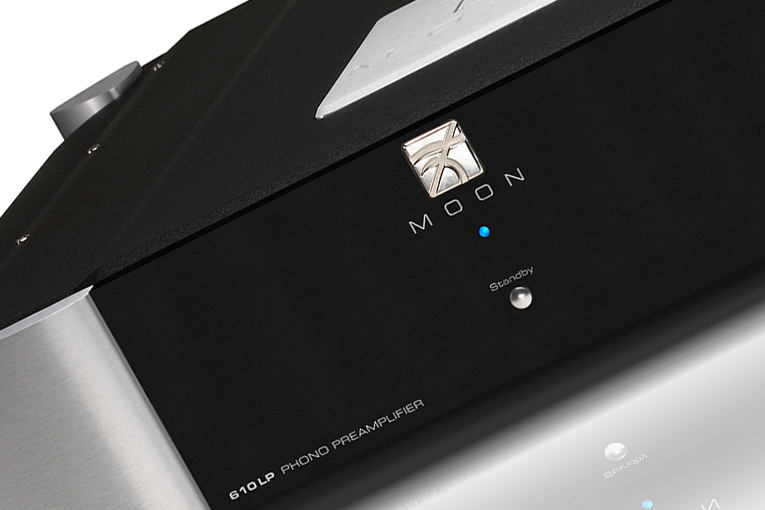
The last album I listened to on the Moon Evolution 610LP before submitting this review was Giant Sand’s Cover Magazine (LP, Thrill Jockey THRILL 104LP). As I pulled it out of its sleeve and placed it on the ’table, I noticed a hair from my cat, Tex, an Abyssinian who died nine years ago. Tex was a beautiful little guy with ticked fur -- he looked a bit like a miniature bobcat. It was with a smile tinged with sadness that I swiped that hair off the LP with my record brush and set the needle down in the lead-in groove. Howe Gelb sang, in his gritty, Southwestern drawl, “Fly me to the moon, let me play among the stars.”
How utterly proper.
. . . Jason Thorpe
jasont@soundstagenetwork.com
Associated Equipment
- Analog source -- Pro-Ject RPM 10 turntable, Roksan Shiraz cartridge
- Digital source -- Logitech Squeezebox Touch
- Phono stages -- Blue Circle Audio BC703, Aqvox Phono 2 Ci
- Preamplifier -- Sonic Frontiers SFL-2
- Power amplifier -- Audio Research VT100
- Integrated amplifier -- Audio Research VSi75
- Speakers -- Definitive Technology Mythos STS, Focus Audio FP90 BE
- Speaker cables -- Nordost Frey
- Interconnects -- Nordost Frey
- Power cords -- Nordost Vishnu, Shunyata Research Taipan
- Power conditioners -- Quantum QBASE QB8, Shunyata Research Hydra Model-6
Moon by Simaudio Evolution 610LP Phono Stage
Price: $7500 USD.
Warranty: Ten years parts and labor (with registration).
Simaudio Ltd.
1345 Newton Rd.
Boucherville, Quebec J4B 5H2
Canada
Phone: (450) 449-2212
Website: www.simaudio.com






















